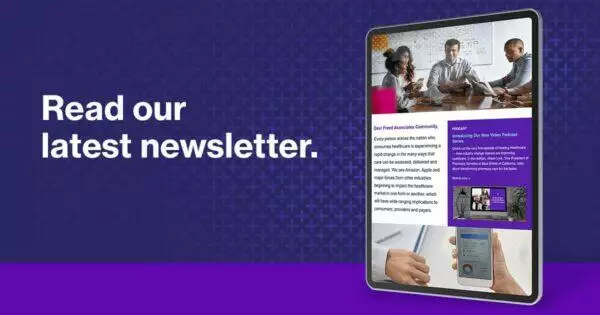Lean Process Drives Finance Department Transformation
A nationally renowned health system had grown rapidly through acquisitions and joint ventures and had now reached a point where several large entities were now a single organization, at least in name. For two years, the organization’s finance departments remained decentralized, each retained from their original companies.

Problem to Solve
As anyone involved with a merger knows, mergers are anything but simple. When two or more distinct organizations come together, the business is either left with these distinct remaining cultures or it can choose to intentionally focus on how to bring these cultures, people and processes together to form a new team.
A nationally renowned health system had grown rapidly through acquisitions and joint ventures and had now reached a point where several large entities were now a single organization, at least in name. For two years, the organization’s finance departments remained decentralized, each retained from their original companies. Several times the organization’s leadership had tried to bring the teams together to optimize operations, particularly related to functions, and found itself unable to adjust.
Finance department leaders each had their own processes, especially for the shared function of budgeting, and found themselves unable to streamline workflows to support the new centralized structure. Department employees, who reported to multiple leaders, were asked to perform the same task differently by various leaders and described feeling confused and frustrated about their work. In order to transform the department’s operations and objectively optimize processes, Freed Associates (Freed) was retained to provide a new, productive path forward.
Strategy and Tactics
Key to successfully restructuring a complex organization is thoroughly assessing its current state to understand its culture, people and operations. After assessing the finance department’s budget process workflows, Freed and key staff members used lean thinking to plan several working sessions. These sessions would establish the current state and help determine a collaborative future state vision to match the organization’s centralization needs.
For the initial assessment, the team worked with departments that engaged directly with finance, such as nursing, radiology, food services, and facilities management. The goal was to help finance team members document and understand their current operations in conjunction with other departments and see how their processes affected the larger organization.
The finance department would start with a value stream mapping workshop involving finance staff members as well as their principal internal clients and other key stakeholders. The workshop would enable participants to discuss finance’s most significant operational issues and determine new opportunities for process standardization and improvement. To ensure workshop success, attendees would also be part of one-on-one pre-workshop sessions to review their individual current state processes and ensure they would be ready to share them with the larger workshop team.
The pre-plan sessions and the subsequent workshop were eye-opening for many attendees, as many had never met their fellow team members face-to-face or been asked to share details about their day-to-day work. This was the start of a major cultural shift within the finance department, as attendees began to better understand how and why they could work better together.
Results
The three-day value stream mapping workshop proved to be informative, productive, and exciting. Attendees learned how their work fit into the larger organizational framework, and they collaboratively planned an integrated vision for the department’s future.
The workshop attendees saw the beginning of a finance department-led cultural transformation. Those who had never previously spoken to one another were now talking and laughing, and had a common language of understanding and expectations. Where siloes had previously existed, new connections were formed. A finance department that had previously focused on the improbability of improving was now speaking about a better future through a shared culture of continuous improvement.
Together, the workshop attendees established a plan and commitment for near-term improvements in their budget processes, as well as an overarching five-year plan for future advances. The most notable and immediate enhancements included:
- Improved processes – Reduced cycle time, improved work group efficiency and streamlined decision-making
- Better communications – Regular forums created for cross-team communication and team problem-solving
- Increased efficiency – Reduced budgeting cycle time from 8 months to 4 months, with an estimated recurring savings of more than $1 million per year
- Increased customer satisfaction – Improved internal feedback to the finance department’s processes, from “poor” to “satisfied”
Conclusion
The finance department’s value stream mapping workshop became the first step in the department’s efforts to achieve the kind of improvements and cultural transformation it needed to support ongoing integration. Staff members learned new operational and interpersonal skills to help create consistency and standards previously missing from their everyday processes, particularly in budgeting.
Based on these changes, the finance department now has a clearer long-term path toward achieving greater productivity and improved staff member engagement and satisfaction.


